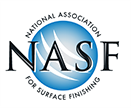NASF Submits Comments to Minimize Small Business Impact of EPA Rule for the Use of N-Propyl Bromide
NASF has requested that EPA consider allowing five years to implement any restrictions on the use of n-propyl bromide for critical applications.
#nasf #regulation #management
EPA held a meeting of the Small Business Advocacy Review (SBAR) Panel on May 11, 2021 to discuss EPA’s potential proposed rulemaking for n-propyl bromide (1-Bromopropane) under TSCA §6(a). NASF and two of its members have been designated as small entity representatives (SREs) and participated in this meeting. EPA identified unreasonable risks associated with certain conditions of use and laid out its proposed approach to impose restriction on the use on n-propyl bromide. This included setting an existing chemical exposure limit (ECEL) of 0.05 parts per million (ppm) for n-propyl bromide based primarily on calculated occupational exposure risks.
As part of this process, NASF submitted comments on EPA’s approach that is under considerations. The comments noted that the ECEL would not be achievable, even with expensive, state-of-the-art vacuum degreasers. Accordingly, facilities that must use n-propyl bromide based on customer approvals or specifications would have to switch to alternatives.
Unfortunately, while some of the available alternatives may be promising, none of them appear to be a drop-in replacement at this time due to technological and economic feasibility considerations. To avoid potentially major consequences for small surface finishing businesses, NASF requested that EPA consider allowing at least five years to implement any restrictions on the use of n-propyl bromide for critical applications. This additional time could help to reduce the potential adverse impacts of the rule on small surface finishing businesses.
The SBAR Panel will consider all of the comments (both verbal and written from the small entity representatives) on the rule and will prepare a report for the EPA Administrator on potential ways to reduce impacts to small entities that may arise from this rulemaking. Following this input, EPA will draft a proposed rule to identify management options for n-propyl bromide that protect human health and the environment and will minimize impacts on small businesses. EPA must issue a proposed rulemaking by August 2021. For more information of this process and NASF’s comments, please contact Jeff Hannapel with NASF at jhannapel@thepolicygroup.com.

This update is courtesy of the National Association for Surface Finishing (NASF). For more information or to become a member, visit nasf.org.
RELATED CONTENT
-
Hybrid Sol-Gel Coatings in Surface Engineering
A look at the use of modified sol-gel polymer films and hybrid system coatings, as well as the methodologies for evaluating the mechanical properties of the coatings.
-
Cyanide-Free Electroplating of Cu-Sn Alloys
This paper is a peer-reviewed and edited version of a presentation delivered at NASF SUR/FIN 2012 in Las Vegas, Nev., on June 13, 2012.
-
Plastics and Plating on Plastics [1944]
This republished 1944 AES convention paper presents an historic perspective of the early days of plastics in surface finishing - using them and plating on them, in the waning years of World War II. The discussion reviews the uses of plastics in plating equipment and processing at that time, as well as the coating of the plastics themselves, with accompanying application photos. You will note that today’s conventional plating-on-plastics processes lay far in the future. Surprisingly, CVD processes are discussed.















